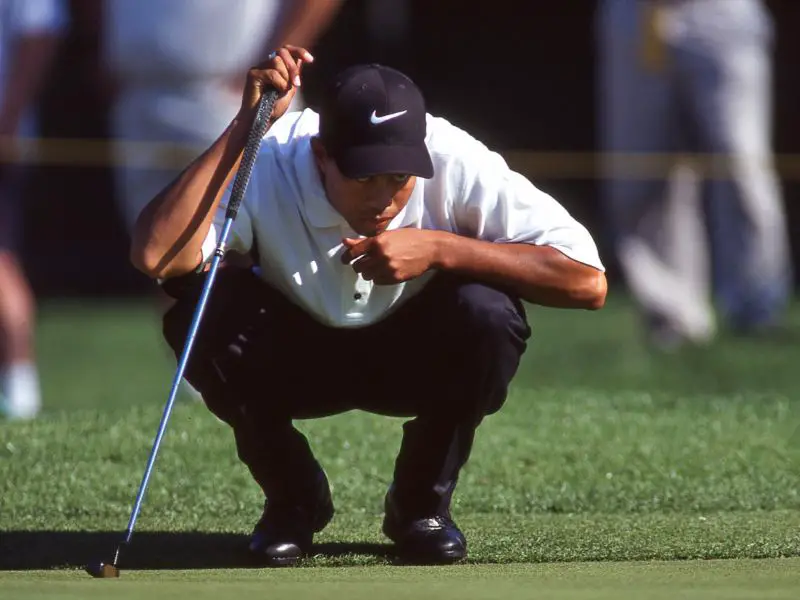Since the 1970s, there have been two main tours that elite professional golfers participate in. The PGA Tour and DP World Tour (previously known as the The European Tour.)
In recent times, a third option has presented itself to professional golfers; the LIV Tour. This Saudi-backed tour is offering professional golfers the opportunity to make an obscene amount of money to play at their events.
Recently, all of these tours have announced that they will be merged together. So, while it is not quite clear how this merger will play out, it appears that golfers will have the ability to play in many different tournaments, and possibility switch between tours.
There are other tours for professional players, but they are not quite at the elite level as the above leagues.
For golfers looking to compete with the best in the world and earn the most money, these PGA, DP World Tour, and LIV offer professionals the opportunity to compete with the best.
Regardless of the tour, decisions have to be made about which tournaments to enter.
In the article below, we are going to cover all you need to know about how pro golfers decide which tournaments are worth their time. Plus, the main factors that play into this decision.
We have a lot to cover so lets get started.

How Do Professional Golfers Decide Which Tournaments To Enter?
There are several factors that professional golfers take into consideration when it comes to deciding which events to enter. These range from possible earnings and location to the type of course on offer and ranking points.
1.) Prize Money
Although we’d like to think that golfers play professionally purely for the love of the game, the recent clamor from some of the game’s biggest names to join the new LIV Tour has proven that not to be the case.
Prize money does have significance when it comes to professionals deciding which events to play. Many pro golfers are more likely to play in a certain event if the payouts are high.
2.) Designated Events And Ranking Points
In 2023, the PGA Tour designated 17 tournaments throughout the year as elevated events. These events feature top players and offer substanitally increased purses.
Players who achieved a top 20 ranking in the 2022 Player Impact Program (PIP) are obliged to participate in the elevated events they qualify for, although they are permitted to skip one tournament during the year.
These designated events carry significant ranking points. These points will help golfers to qualify for Major Golf tournaments. As a result, many golfers will look to focus on playing in events where large amounts of points are on offer.
Similarly, golfers need to have a certain world ranking to qualify for some events, meaning that golfers sometimes don’t have a say on whether they play in certain events.
Additionally, golfers on both the PGA and European Tour can gain automatic qualification to the Ryder Cup by accumulating a certain number of ranking points over a two-year period.
The Ryder cup pits the best American golfers in the world against the best European golfers in the world and is one of the must-see events on the golfing calendar.
3.) Location
The PGA Tour, LIV, and the DP World Tour all host events all over the world. If a golfer has two tour events down the West coast of the United States in one month, then they aren’t likely to then travel to one in Europe in between.
As a result, many golfers map out their year based on convenience and easy access from one event to the next.
4.) Course design
Certain golf courses are going to suit certain players, while others will be a nightmare to play. If you are on the hunt for big wins for ranking and prize money, then it’s only natural to pick the courses that suit your game.
On the flip side, if a golfer is looking to improve a certain part of their game, then they may look to play on courses that will put that part of their game under scrutiny.
4.) Fitness and Health
All golfers need to factor in fitness when it comes to deciding which tournaments to play in. While significant injuries are, of course, going to stop golfers from competing in any tournament, smaller injuries and fatigue can also have an impact on the decision-making process.
If a professional golfer has an injury, then it’s perhaps seen as a good idea to rest for a couple of weeks and skip a few tournaments, especially if there is a Major on the horizon.
5.) Expense
Lastly, being a professional golfer can be a tough job. Worse yet, its expensive to be a professional golfer. Pro golfers are responsible for their own expenses on tour. Paying for travel and housing can start to add up over time.
Traveling to Hawaii or the Bahamas may not be worth it to some golfers. For this reason, golfers that have limited earnings on tour may choose to skip more expensive trips. Check out our article What Are The Expenses Of A PGA Tour Player for a complete guide.

How Many Tournaments Does A PGA Player Have To Play In A Year?
In order to stay on the PGA Tour, each golfer has to play in at least 15 events each year. Of course, there are exemptions to this rule. If a player has a long-term injury which impacts their ability to fulfil these requirements they can receive an exception.
If a player fails to participate in 15 PGA tour events in a season, either by failing to qualify or by choice, then their PGA Tour card will be removed.
As of 2023, all elite golfers on the PGA Tour have committed to competing in at least 20 events each year. Designated events offer around $20M in total prize money, which is significantly higher than prior amounts.
Golfers who finished in the top 20 of the 2022 Player Impact Program (PIP) must play in these elevated events or risk losing the PIP end of year payout.
These events were the result of the tour upping prize money in a bid to keep certain pros from leaving to join the LIV Tour.
Can PGA Tour Card Holders Play In Any PGA Tour Event They Want To?
Having a PGA Tour card doesn’t give you the divine right to compete in every event on the tour. Many events on the tour will require golfers to have a certain ranking to participate. Poor-performing golfers will find themselves playing the lower quality PGA events.
Interested in learning more about what it takes to earn a PGA Tour card? Check out our article on What Is A PGA Tour Card? (All You Need To Know)
Can PGA Tour Players Play In Non-PGA Events?
Historically, PGA Tour players have been allowed to play in European Tour events. This has helped the likes of Rory McIlroy to still gain points for his Ryder Cup place on Team Europe on the European Tour while still being a member of the PGA Tour.
There are some restrictions in place, though. For example, the PGA Tour states that golfers aren’t allowed to compete in Non-PGA events in North America that take place at the same time as a PGA event.
This all but confirms that players such as Dustin Johnson and Phil Mickelson will be ineligible to play in any PGA Tour sponsored events this season.
Final Thoughts
To summarize, golfers have many different things to consider when it comes to deciding which events to play and which ones to miss.
We hope that through this article you now have a greater understanding of these factors, as well as a good idea of what is expected of a PGA Tour golfer.
Hopefully you liked this article and found it helpful. Check out our other blog posts if you liked this one!



2 thoughts on “How Do Pro Golfers Decide Which Tournaments To Play? 5 Main Factors”